Meteor
Meteor is a JavaScript full-stack framework for creating both web and mobile applications. We can’t talk about fast without mentioning it. Meteor is the king of fast. It does tie you down to its rules and ways of doing things, but if you aim to get a prototype out there as soon as possible, Meteor’s got your back.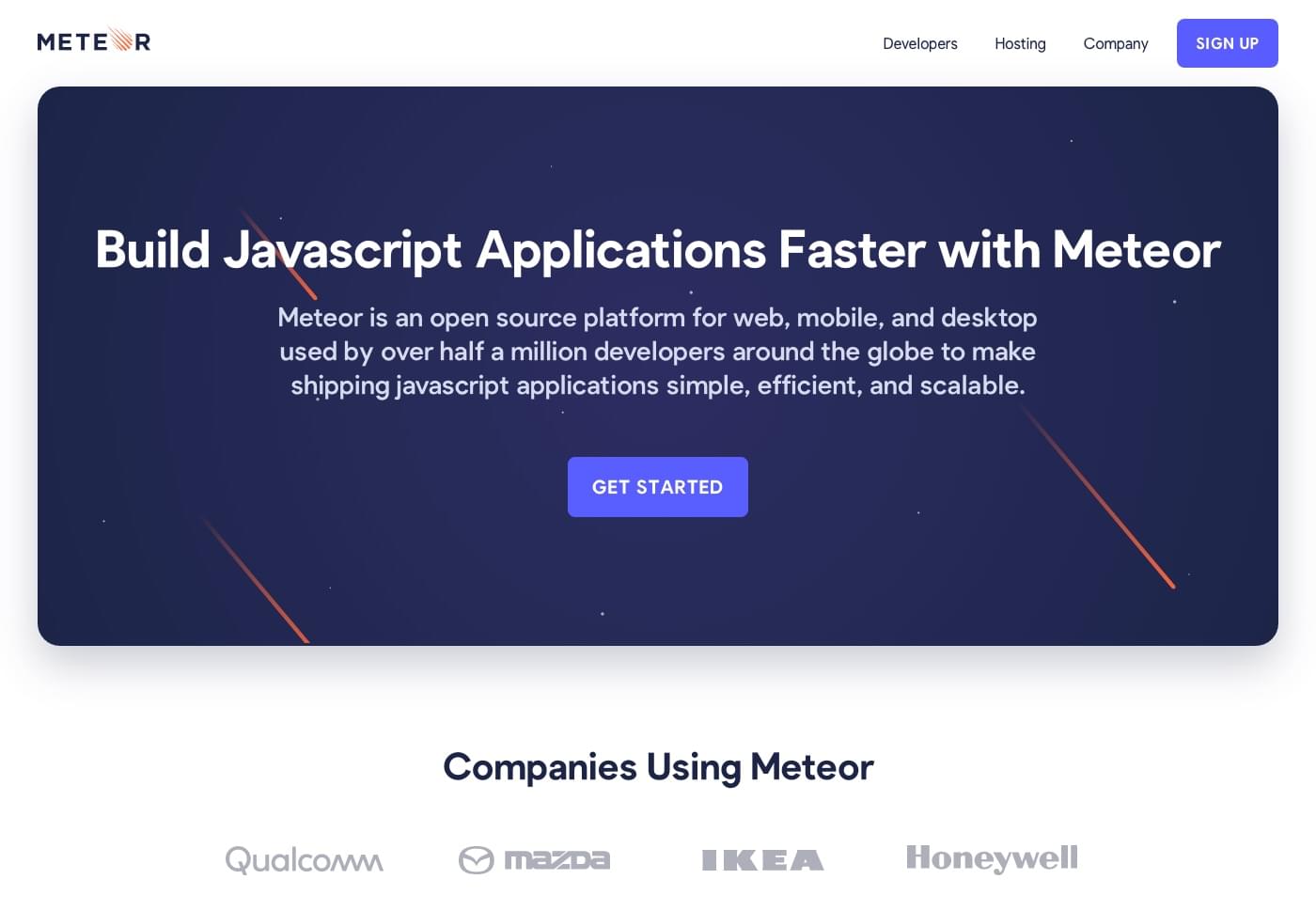 One of Meteor’s great features is its server-client shared code capabilities. This saves a lot of time and helps you focus on what’s really important.
It also comes with MongoDB and WebSockets integration right out of the box.
One of Meteor’s great features is its server-client shared code capabilities. This saves a lot of time and helps you focus on what’s really important.
It also comes with MongoDB and WebSockets integration right out of the box.
Sails
Sails is a model-view-controller web application framework. This reduces friction for developers who are already familiar with other MVC frameworks regardless of language or platform. What makes Sails.js unique is how it simplifies the process of creating regular, modern web apps with its simplified data access layer — which is Database agnostic — and REST API blueprints that generate routes and actions based on your application design.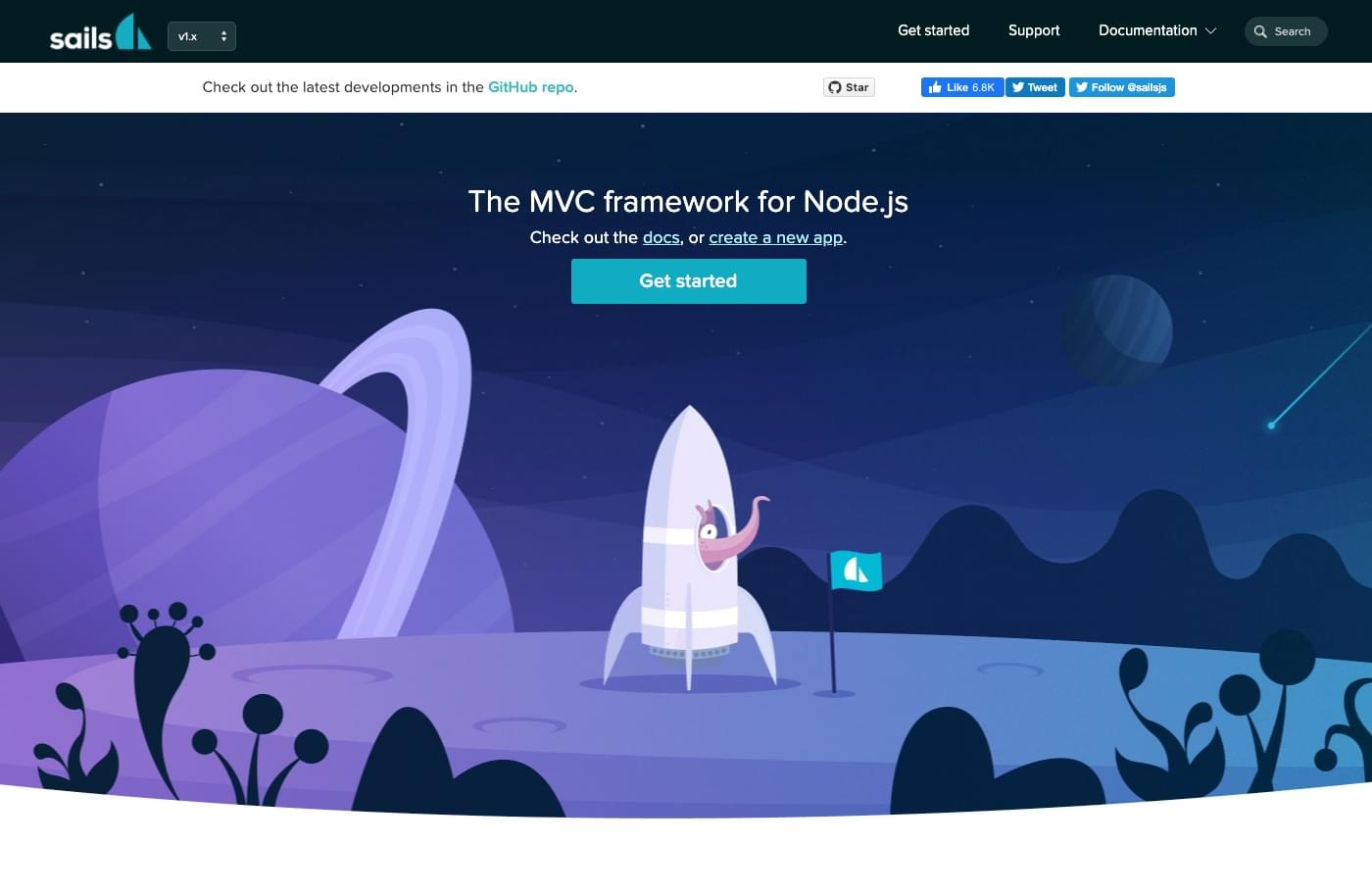 Among other things, it features basic security and role-based access control, and out-of-the-box WebSockets integration, which makes it an excellent choice for real-time applications.
Among other things, it features basic security and role-based access control, and out-of-the-box WebSockets integration, which makes it an excellent choice for real-time applications.
MongoDB + Mongoose
If you’re using MongoDB, then you should profit from its loyal companion, Mongoose. This library helps you easily model your data into schemas, and it assists you with casting and validation, among other things. It’s a brilliant way of getting a lot of boilerplate out of the way that would otherwise drag you down.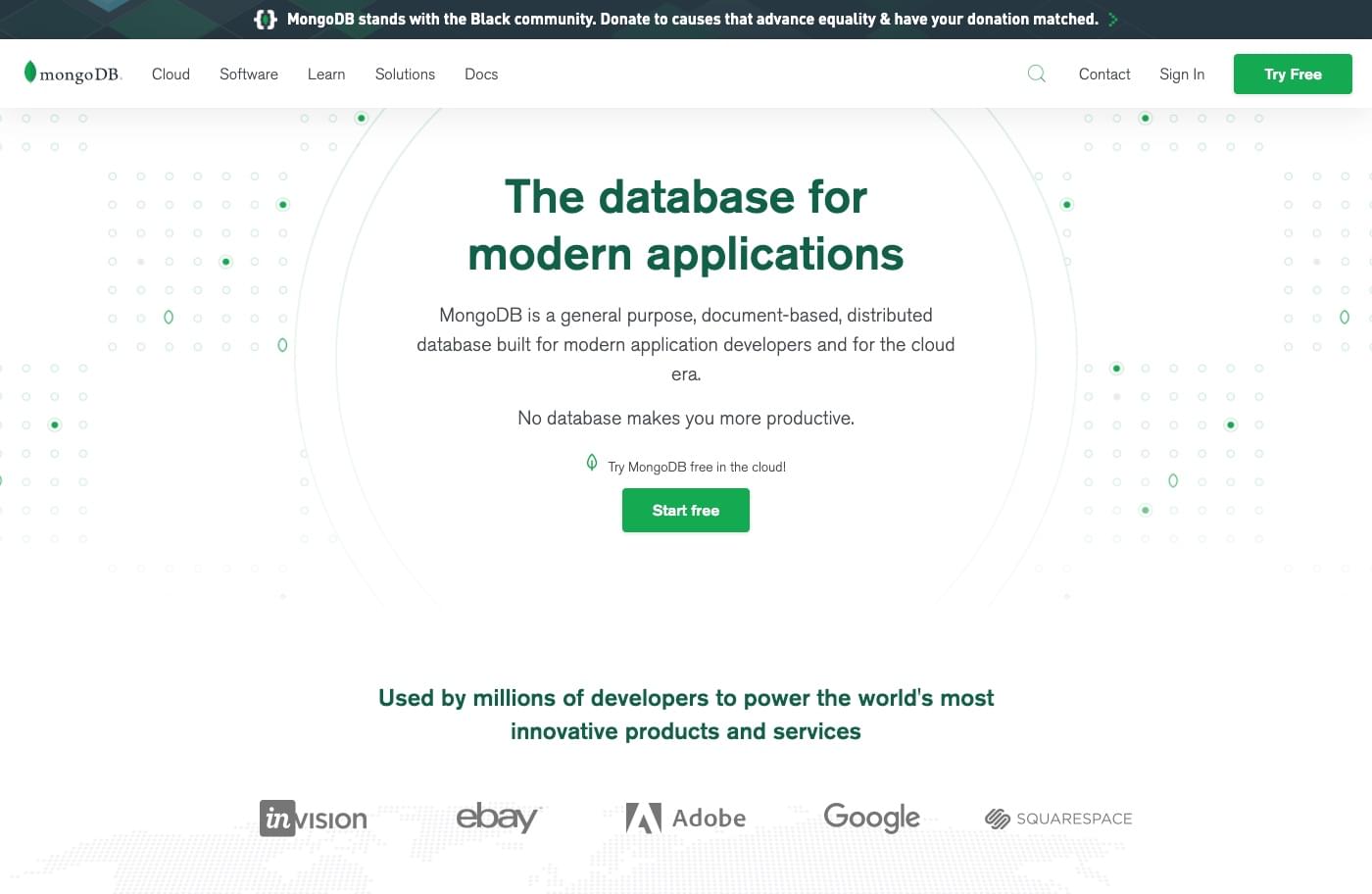 We could say this one is a two-in-one, given that it implies the use of MongoDB, which is a fantastic choice whether you’re using Mongoose or not. MongoDB is … well, allow me to quote their website:
We could say this one is a two-in-one, given that it implies the use of MongoDB, which is a fantastic choice whether you’re using Mongoose or not. MongoDB is … well, allow me to quote their website:
MongoDB is a general-purpose, document-based, distributed database built for modern application developers and for the cloud era.And to wrap it up, they add:
No database makes you more productive.There you go. What else do you need? Stop procrastinating and get coding!
Lodash
Lodash provides a convenient set of tools to make your everyday coding life more comfortable. It assists you with iterating, ordering, throttling, debouncing, and probably any function that you would end up throwing in a utils file.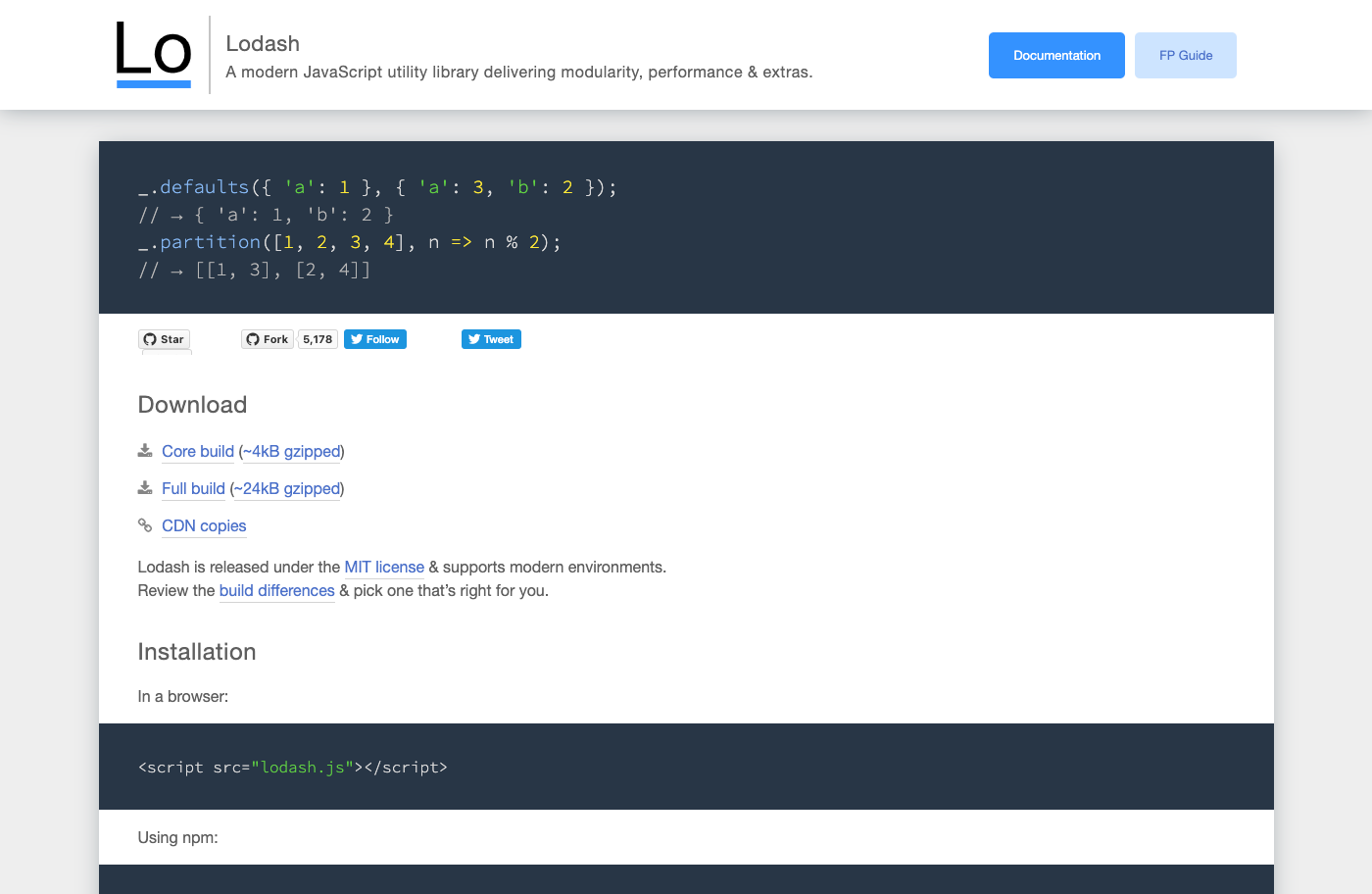 One really cool aspect of Lodash is that all of its functions can be imported or even installed separately. No need to clutter your bundles with unnecessary code.
If you just need the throttle function, you can do this:
One really cool aspect of Lodash is that all of its functions can be imported or even installed separately. No need to clutter your bundles with unnecessary code.
If you just need the throttle function, you can do this:
npm install lodash/throttle
import throttle from 'lodash/throttle'
Svelte
Svelte is a reasonably new front-end framework that’s been building a lot of hype for some time now, and for a good reason. It’s so easy to use that it could get your toddler nephew to steal your job if you expose them to it. I’m not joking; this is a minimalistic, no-BS framework that will make you wonder why it ever got so complex to build front ends in the first place. Don’t get me wrong: writing front-end code will still be complicated, but not for the wrong reasons. If this is where the future of web development is taking us, then I can’t wait to see what’s next.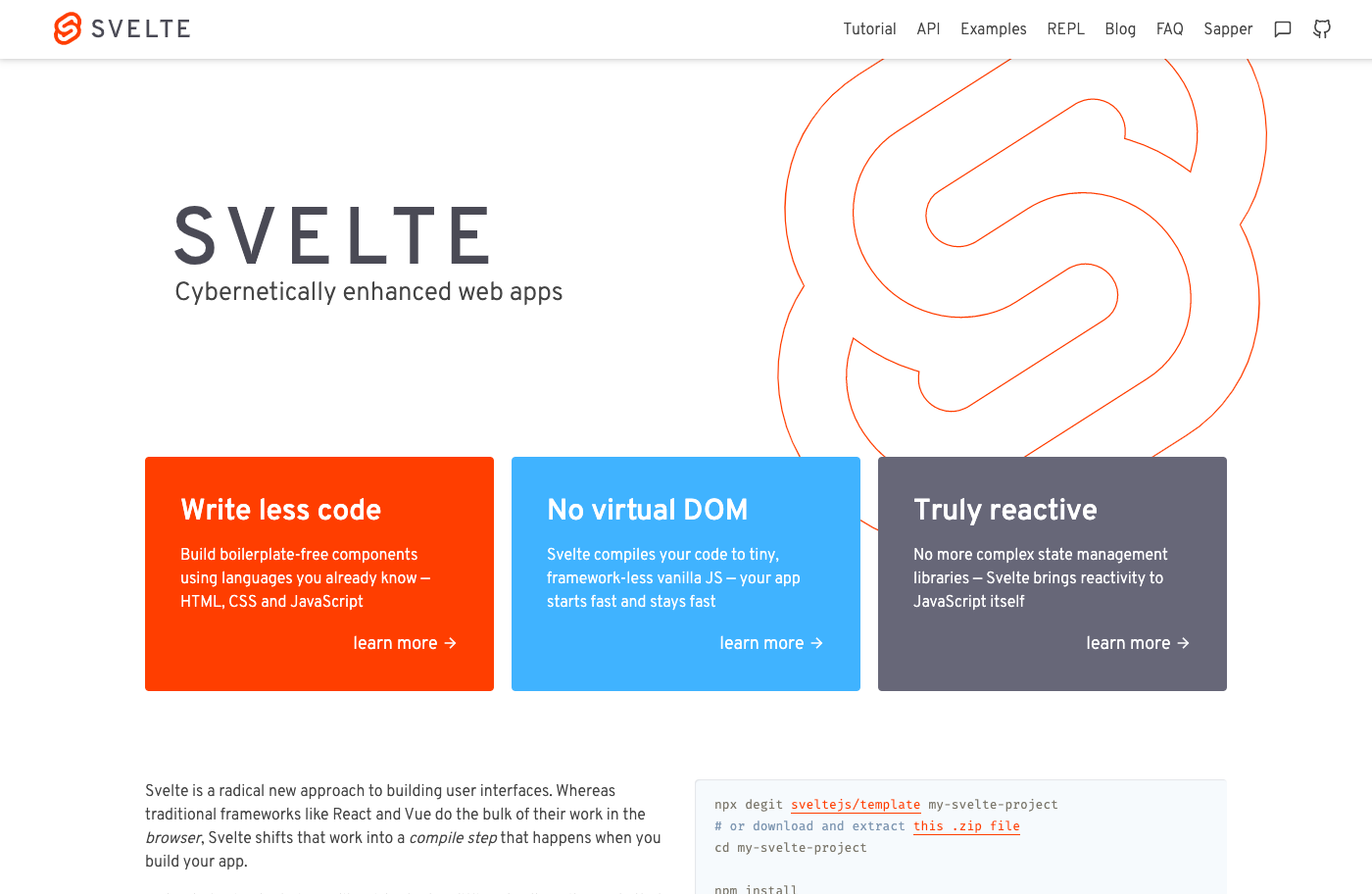 Svelte is reactive by default. No need for complicated state management libraries or Virtual DOM and what have you. It doesn’t even run in the browser. It compiles your code to a tiny, optimized, vanilla JavaScript file, and that’s what the browser runs. So, there you go: besides being super easy to use, it’s also brilliant.
Check the examples on their website if you don’t believe me.
Svelte is reactive by default. No need for complicated state management libraries or Virtual DOM and what have you. It doesn’t even run in the browser. It compiles your code to a tiny, optimized, vanilla JavaScript file, and that’s what the browser runs. So, there you go: besides being super easy to use, it’s also brilliant.
Check the examples on their website if you don’t believe me.
Vue.js + Vue CLI
Before Svelte, Vue.js was definitely my top choice for the most straightforward front-end framework. And it can still stand its ground in that arena against the rest of its competitors. Vue.js has the advantage of being mature and reliable. It struggled to get the industry’s trust at first but, we’re now at a point where no one can argue that Vue.js has earned its rightful place at the pole.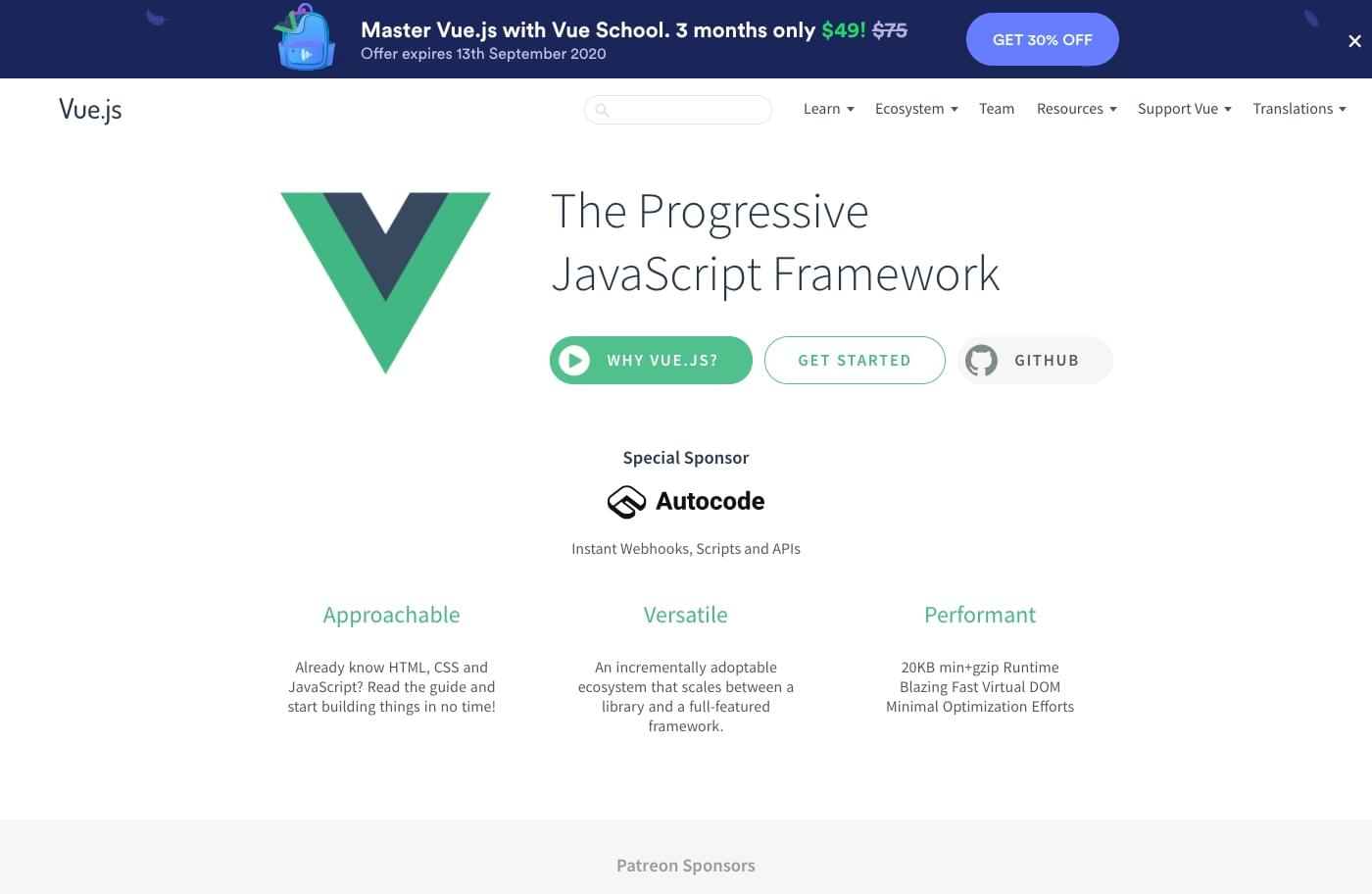 But what we’re here for is not Vue.js in itself but the Vue CLI. This is by far the fastest way to bootstrap a project with Vue.js. It takes care of all the hassle and complexity of setting up your environment and gets you straight into writing code.
What I love about it is its out-of-the-box support for TypeScript and Unity Testing, and the cherry on top is that you don’t need to “eject” your app to make configurations to the environment. That’s an unbeatable, long-term support assurance that its closest competitor can’t offer.
But what we’re here for is not Vue.js in itself but the Vue CLI. This is by far the fastest way to bootstrap a project with Vue.js. It takes care of all the hassle and complexity of setting up your environment and gets you straight into writing code.
What I love about it is its out-of-the-box support for TypeScript and Unity Testing, and the cherry on top is that you don’t need to “eject” your app to make configurations to the environment. That’s an unbeatable, long-term support assurance that its closest competitor can’t offer.
React + CRA
A close competitor to Vue CLI in the “fast” arena is definitely Create React App, better known as CRA. It’s super fast to get started with, and if you’re already familiar with React, this might be a better choice for you.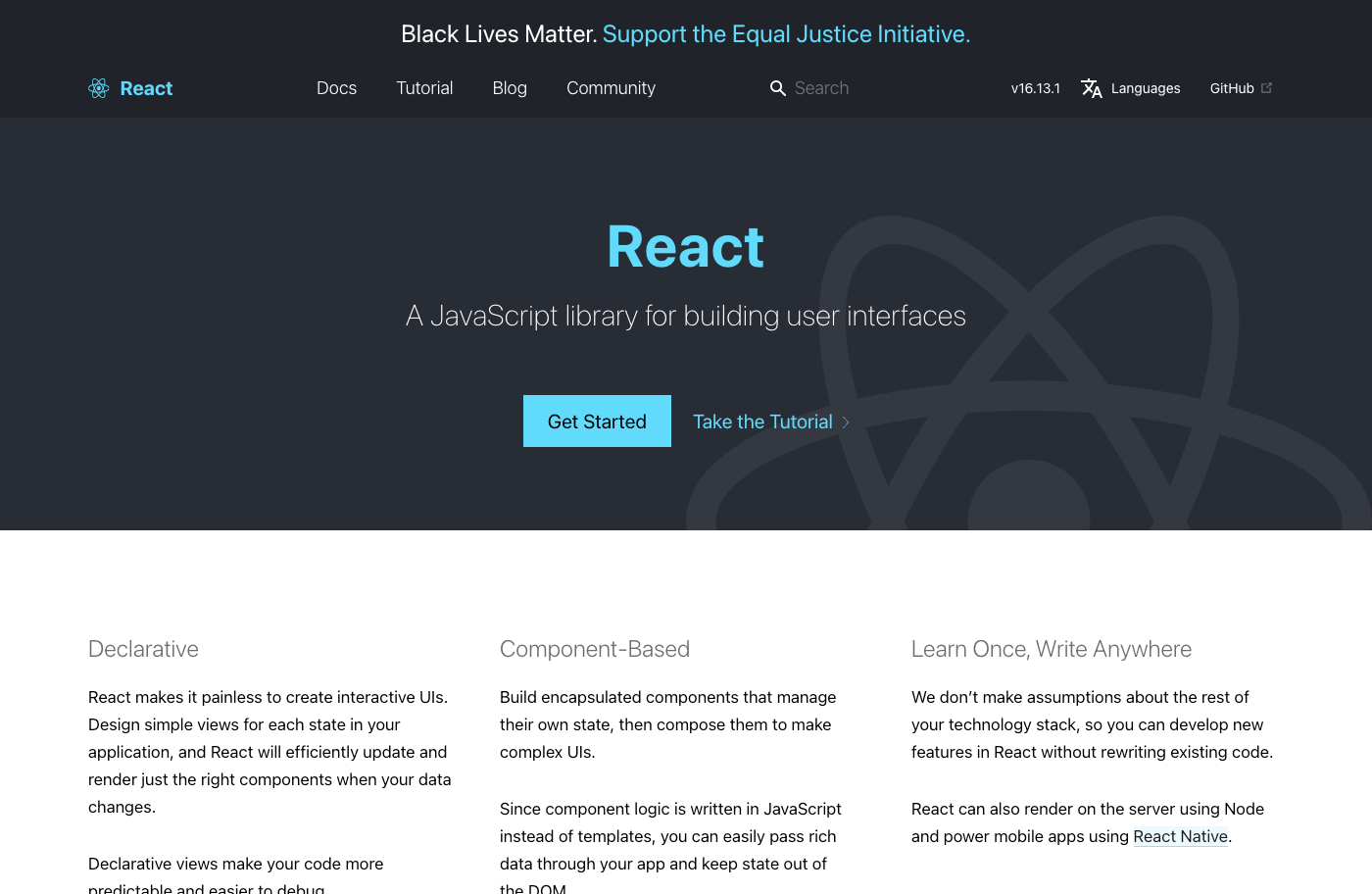 CRA is actively maintained, and its focus is on keeping your environment smoothly updated. The only downside to this is that if you need to customize your environment, you’d usually end up having to “eject” your app to expose the webpack configuration. As soon as you do that, the CRA team will no longer provide support, given that you’d no longer have a CRA app.
Still, unless you’re trying to build something that relies on a particular configuration, you’ll probably never need to “eject.”
CRA is actively maintained, and its focus is on keeping your environment smoothly updated. The only downside to this is that if you need to customize your environment, you’d usually end up having to “eject” your app to expose the webpack configuration. As soon as you do that, the CRA team will no longer provide support, given that you’d no longer have a CRA app.
Still, unless you’re trying to build something that relies on a particular configuration, you’ll probably never need to “eject.”
Three.js
If you’re building anything that requires 3D in the browser, then Three.js is your friend. It’s super easy to use, has a great community, and has as many contributors as stars in the sky. Three.js makes WebGL simple.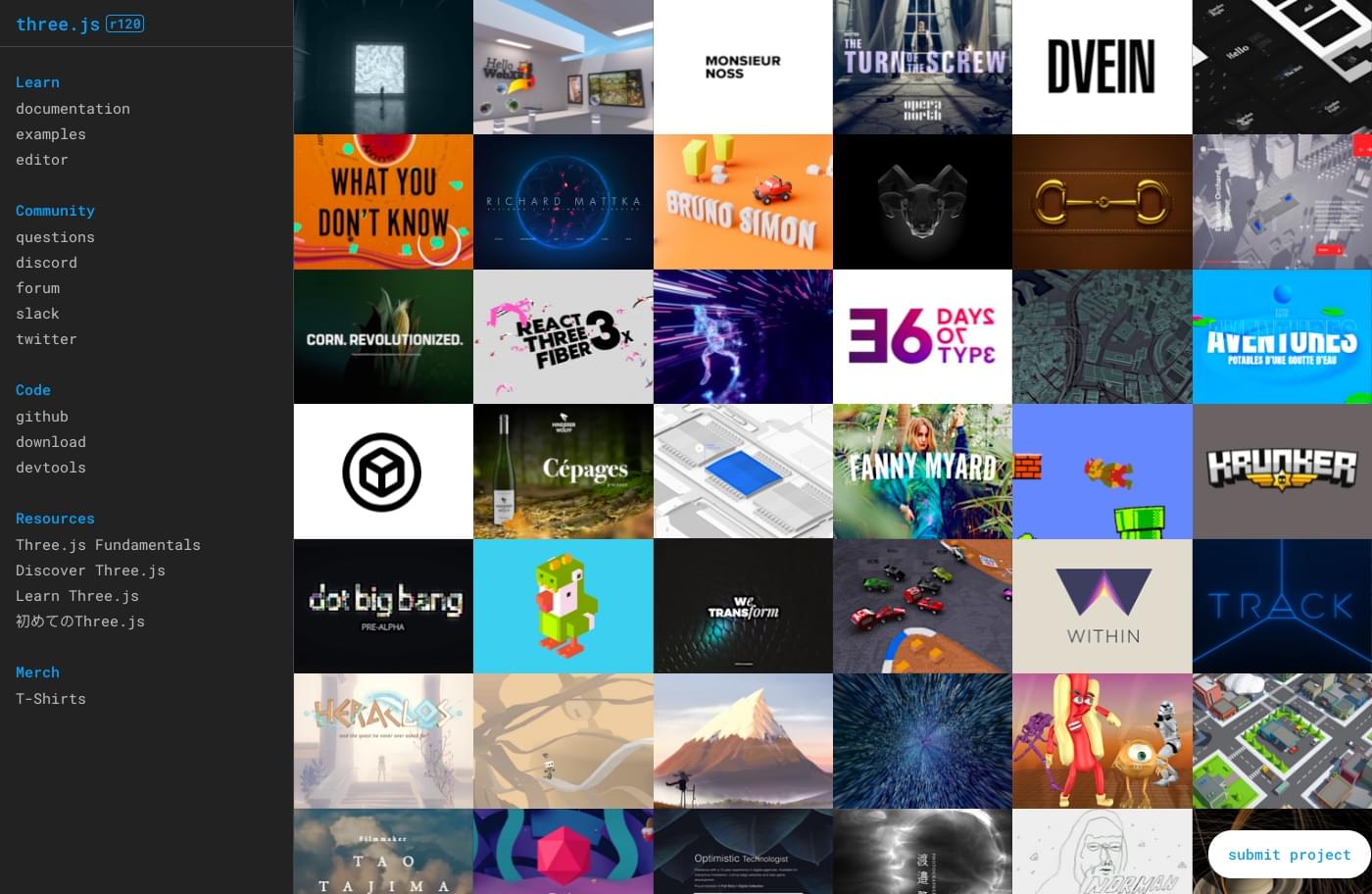 Three.js is a lightweight rendering library that can be easily integrated with most projects, making it my top choice for WebGL. You should check the featured projects on their website to get inspired. 3D on the web doesn’t have to be just for games. You can bring a whole new dimension to your customer’s experience.
Let me show you a couple of my favorites:
And here’s a bonus, a music video:
Three.js is a lightweight rendering library that can be easily integrated with most projects, making it my top choice for WebGL. You should check the featured projects on their website to get inspired. 3D on the web doesn’t have to be just for games. You can bring a whole new dimension to your customer’s experience.
Let me show you a couple of my favorites:
And here’s a bonus, a music video:
PixiJS
Need some nice and smooth 2D animations? Pixi is an HTML5 Creation Engine with a super-fast 2D WebGL renderer.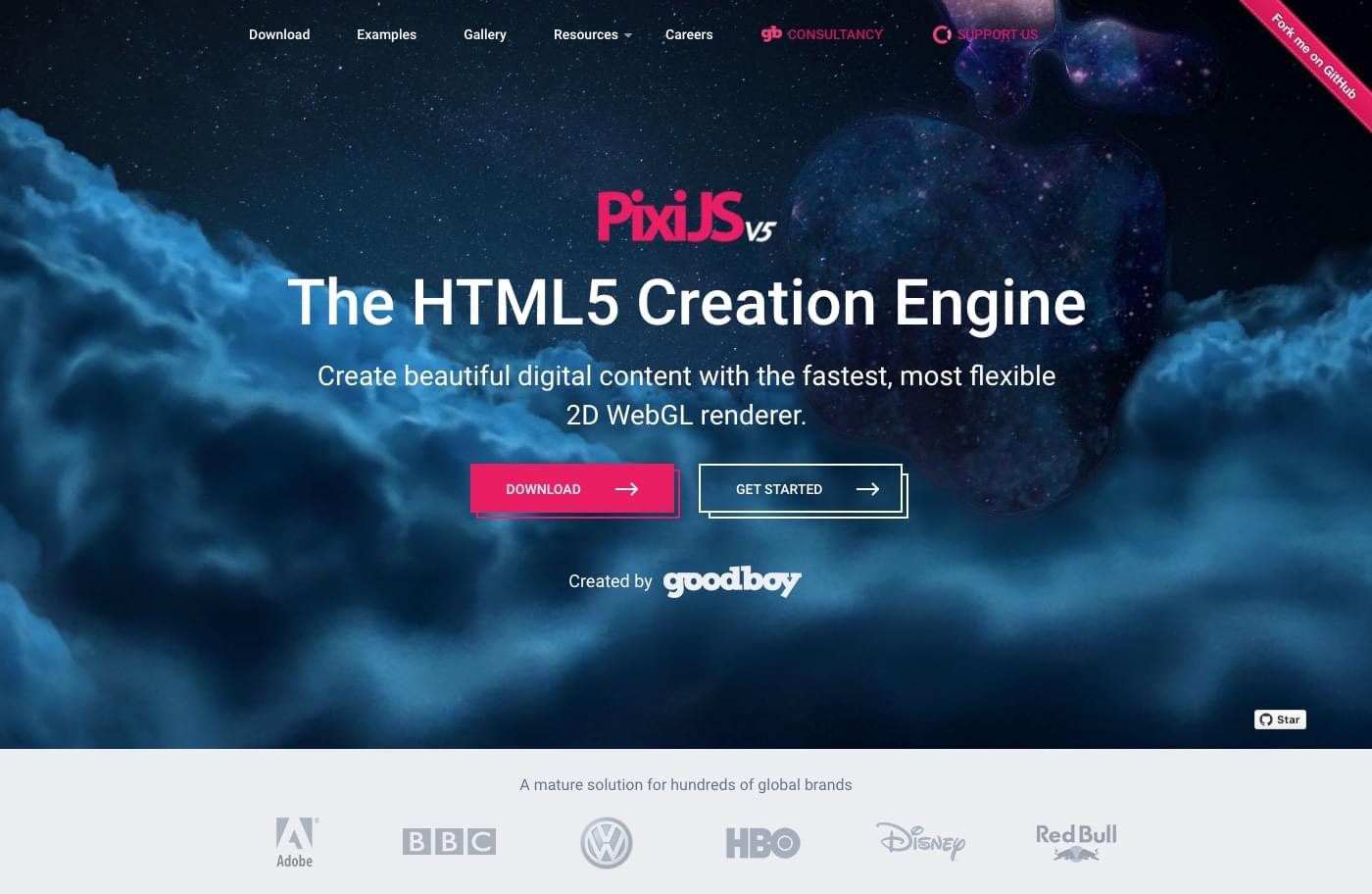 It’s super simple to use, and you should check their gallery to see the plethora of cool things you can create. If any of those look close to what you’re trying to achieve, this library will help you kickstart your project.
It’s super simple to use, and you should check their gallery to see the plethora of cool things you can create. If any of those look close to what you’re trying to achieve, this library will help you kickstart your project.
Parcel
Don’t get me wrong, I love webpack, but if you feel like you’ve had enough of those complicated configuration files, you’re not alone in this world. Parcel is a bundler that works out of the box with no need for configuration. You can customize it if you need to, but the point is that you don’t have to. The default is just fine to get your project up and running.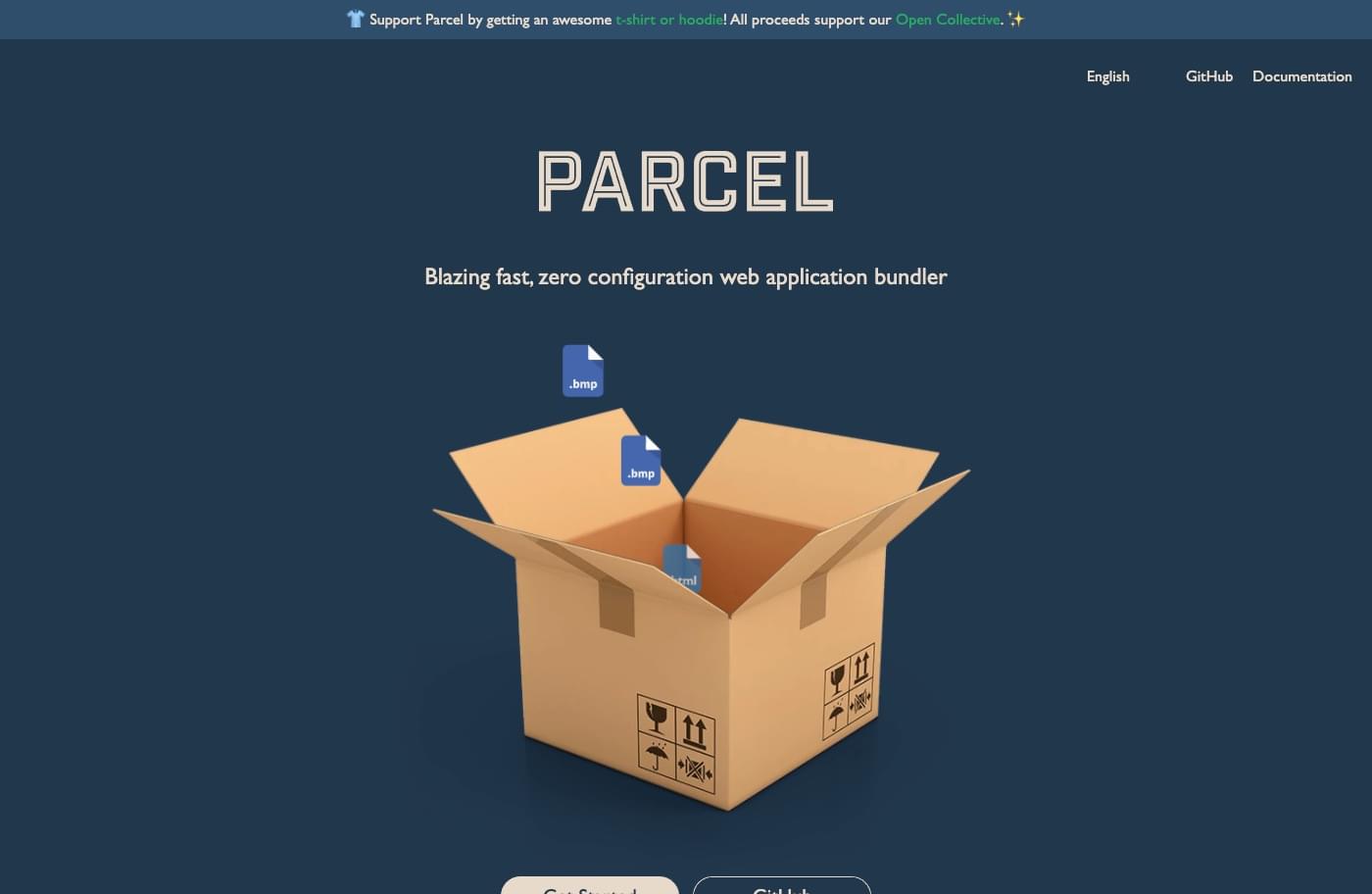
Conclusion
As we’ve seen, there’s no one size fits all but, hopefully, you’ve found something in this list that’s suitable for your particular project. I’m leaving many other great solutions out, of course. But as I said initially, the focus, in this case, is not maintainability or scalability, but how fast they can get you up and running. Building something extraordinary doesn’t need to be too hard. Sometimes, it’s just a matter of using the right tools.Frequently Asked Questions (FAQs) about Starting New Projects Faster
What is the significance of scaffolding in programming?
Scaffolding in programming is a technique used by many modern web frameworks to speed up application development. It involves the automatic generation of basic code structure that developers can build upon. This can include code for basic CRUD (Create, Read, Update, Delete) operations, views, and even database migrations. By providing a basic structure, scaffolding allows developers to focus on the unique aspects of their application, rather than the repetitive boilerplate code.
How does Yeoman help in starting new projects faster?
Yeoman is a powerful tool that helps developers to kick-start new projects quickly. It provides a generator ecosystem, which means it provides templates for various types of applications. These templates or ‘generators’ can be used to quickly set up a new project with a basic structure, dependencies, and even some boilerplate code. This significantly reduces the time and effort required to set up a new project from scratch.
What are the benefits of using a project starter like Yeoman?
Using a project starter like Yeoman has several benefits. Firstly, it saves time by automating the process of setting up a new project. Secondly, it ensures consistency across projects by using the same structure and coding standards. Thirdly, it reduces the risk of errors and bugs by using tried and tested code. Lastly, it allows developers to focus on the unique aspects of their project, rather than the setup and configuration.
How does scaffolding compare to traditional programming methods?
Traditional programming methods often involve writing every piece of code from scratch. This can be time-consuming and prone to errors. Scaffolding, on the other hand, provides a basic structure and boilerplate code to start with. This not only speeds up the development process but also ensures consistency and reduces the risk of errors. However, it’s important to note that scaffolding is not a replacement for understanding the underlying code and programming concepts.
Can I customize the code generated by scaffolding?
Yes, the code generated by scaffolding is fully customizable. The purpose of scaffolding is to provide a starting point, not a finished product. Developers are expected to modify and build upon the generated code to create their unique application. In fact, understanding and customizing the scaffolded code is a great way to learn about the framework and the programming concepts involved.
Is scaffolding suitable for all types of projects?
Scaffolding is particularly useful for projects that follow common patterns, such as web applications with CRUD operations. However, for unique projects with unconventional requirements, scaffolding may not be as beneficial. In such cases, developers may prefer to write their own code from scratch to have full control over the application’s structure and behavior.
What are some popular scaffolding tools?
Some popular scaffolding tools include Yeoman, Rails Generators, Django’s startproject and startapp commands, and Laravel’s Artisan command line tool. These tools support a wide range of programming languages and frameworks, and offer various templates or ‘generators’ for different types of applications.
How can I learn to use scaffolding tools effectively?
The best way to learn to use scaffolding tools effectively is through practice. Start by reading the documentation and tutorials for the tool you’re interested in. Then, try to use it in a small project. Experiment with different generators, customize the generated code, and see how it affects the application. Over time, you’ll gain a better understanding of how scaffolding works and how to use it effectively.
Are there any drawbacks to using scaffolding?
While scaffolding can speed up development and ensure consistency, it’s not without its drawbacks. One potential issue is that it can lead to bloated code if the generated code includes features that are not needed for the project. Another issue is that it can create a dependency on the scaffolding tool, making it harder to switch to a different tool or framework in the future. Lastly, it can be a crutch for developers who don’t fully understand the underlying code and concepts.
How does scaffolding contribute to faster project completion?
Scaffolding contributes to faster project completion by automating the creation of repetitive code and structure. This allows developers to focus on the unique aspects of their project, rather than spending time on setup and configuration. Additionally, by using tried and tested code, scaffolding reduces the risk of errors and bugs, which can also speed up the development process.
Aside from being a software developer, I am also a massage therapist, an enthusiastic musician, and a hobbyist fiction writer. I love traveling, watching good quality TV shows and, of course, playing video games.






